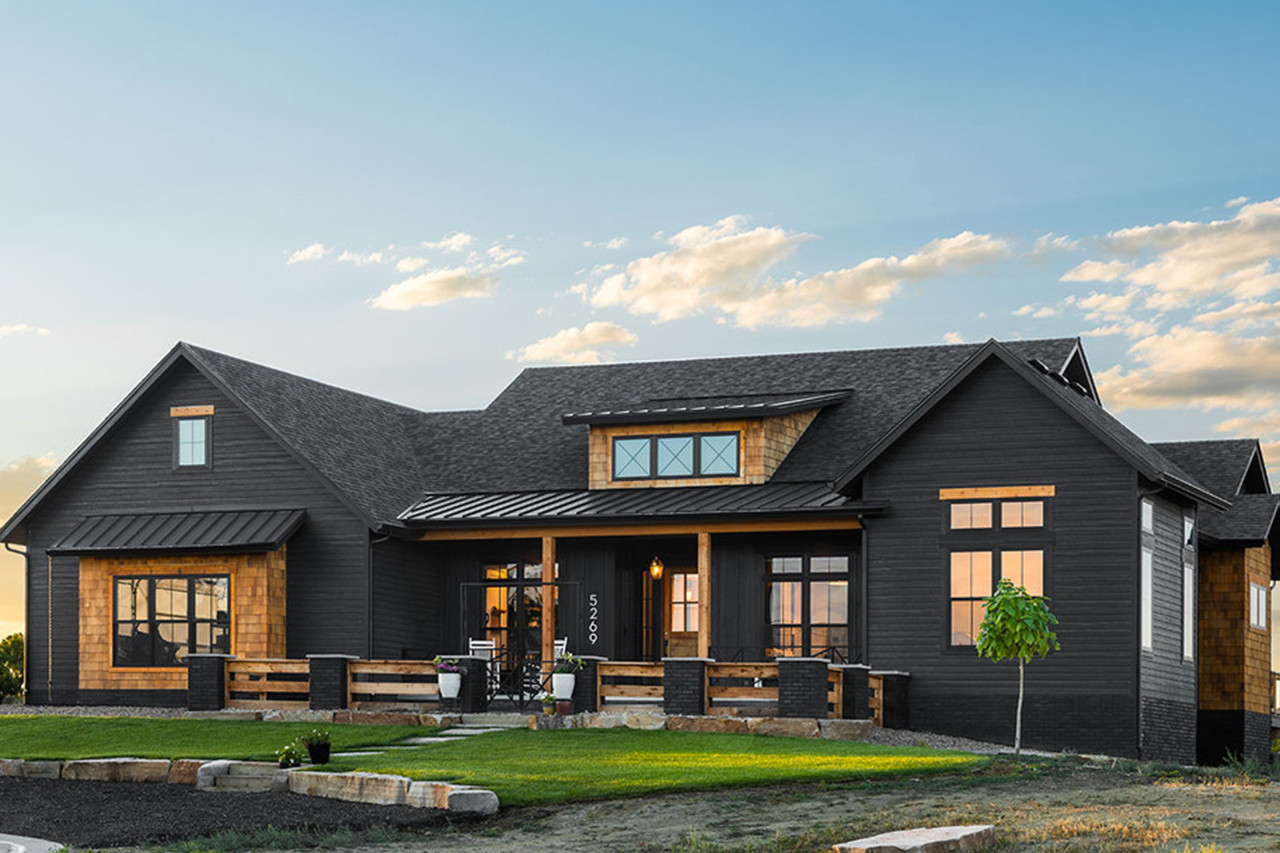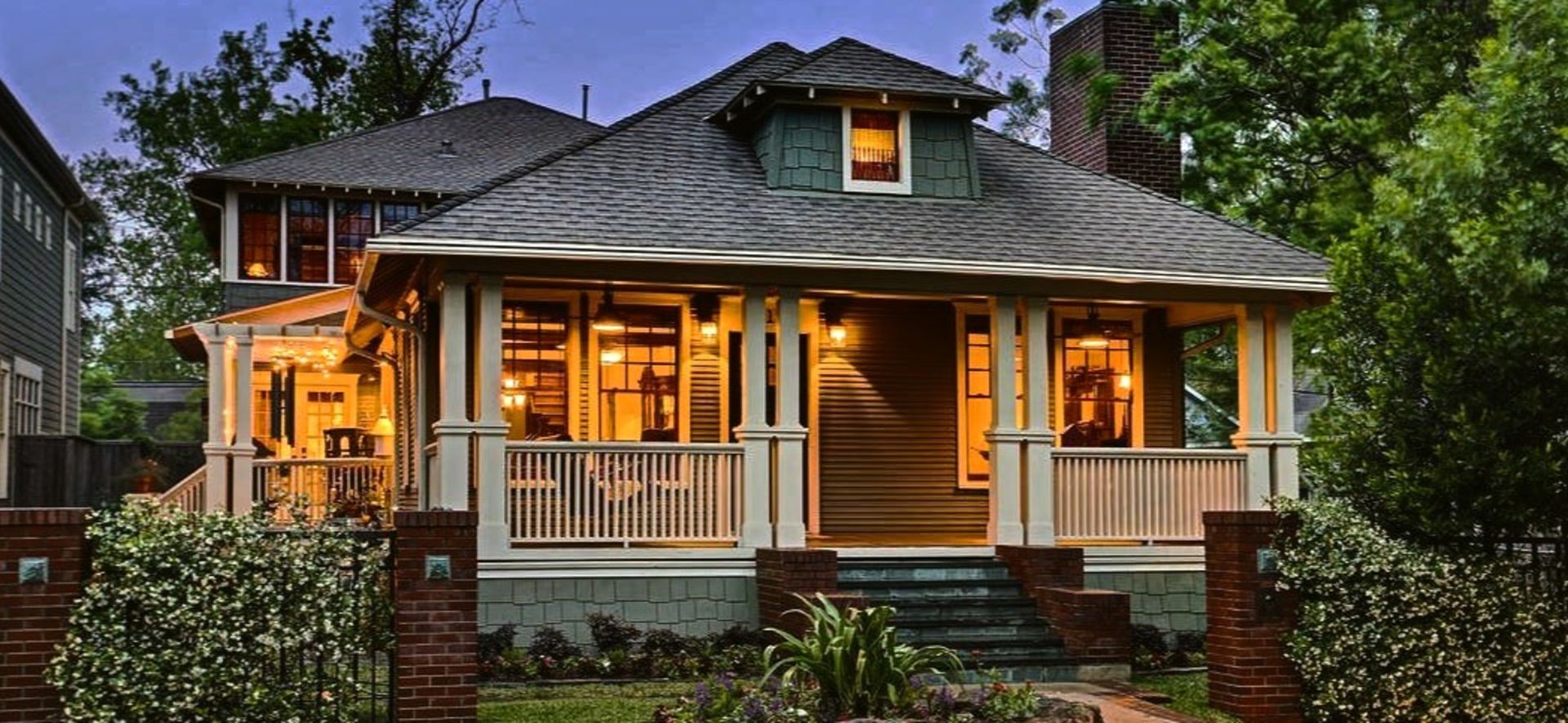The Role of Arts & & Crafts Architects in Elevating Architectural Solutions in Residential Layout
Arts and Crafts architects considerably affect property design through their commitment to workmanship and sustainability. They focus on handmade details and all-natural products, which enhance both looks and area identity. By including customers in the style process, these architects create unique space that resonate with individual preferences. This method questions concerning the future trajectory of property architecture and its potential effect on community characteristics. craftsman style house. What lies ahead for this ageless design approach?

The Concepts of Arts and Crafts Architecture
The significance of Arts and Crafts architecture hinges on its dedication to workmanship and simplicity. This building motion arised in the late 19th century as a reaction to automation, stressing the value of handmade details and all-natural materials. The concepts of Arts and Crafts architecture focus on performance and consistency with the setting. Structures commonly include low-pitched roof coverings, wide eaves, and exposed rafters, advertising a feeling of unity with nature.
Artisans played a substantial role in this design, usually integrating attractive components like stained glass, ceramic tiles, and woodwork, which mirror regional craftsmanship. The shade palette often tends to be earthy and suppressed, enabling buildings to mix flawlessly right into their surroundings. On top of that, the layout encourages open floor plans and communal areas, cultivating a sense of togetherness. On the whole, the concepts of Arts and Crafts architecture celebrate the appeal of simplicity and the importance of human connection to both nature and neighborhood.

Lasting Practices in Residential Style
While the need for eco accountable living remains to grow, sustainable techniques in domestic style have actually gained significant traction amongst architects and property owners alike. Architects are significantly including energy-efficient innovations and lasting materials into their designs, aiming to lower carbon footprints and enhance energy preservation. Approaches such as passive solar design, eco-friendly roofing systems, and rainwater harvesting systems are coming to be standard elements of modern property architecture.
The selection of locally sourced materials decreases transport discharges and sustains local economies. Emphasis on natural light and air flow not just improves indoor air high quality yet additionally minimizes dependence on synthetic lights and environment control systems. These sustainable techniques mirror a commitment to maintaining the atmosphere while giving homeowners with comfy, efficient space. As recognition of ecological concerns expands, the integration of sustainability in domestic design is poised to end up being a defining feature of contemporary architecture, led by the concepts established by Arts and Crafts architects.
Personalization and Personalization in Home Layout
Modification and personalization in home design have actually emerged as key patterns in reaction to the growing desire for unique living environments that more show individual tastes and way of livings. Home owners increasingly seek to tailor areas that resonate with their individualities, bring about a much more significant link with their home. craftsman style house. This activity urges architects to involve clients in the design process, cultivating collaboration that ensures the last result personifies the homeowner's vision
Aspects such as bespoke formats, customized products, and customized surfaces enable a diverse variety of expressions in domestic layout. Arts and Crafts architects play a crucial function in this evolution, highlighting workmanship and quality. Their concentrate on integrating artistic elements with performance warranties that each home is not only aesthetically pleasing yet additionally distinctly matched to the occupants' needs. This focus on customization boosts the general property experience, creating spaces that are both individual and enduring.
The Influence of Arts and Crafts Architects on Neighborhood Looks
As communities develop, the impact of Arts and Crafts architects substantially forms their aesthetic landscape. By highlighting handcrafted information, all-natural products, and traditional building methods, these architects develop homes that reverberate with their environments. Their styles typically incorporate local flora, appearances, and shades, promoting a sense of consistency between developed atmospheres and nature.
The Arts and Crafts movement promotes community identity via architectural connection. By urging homeowners check here to take on similar layout principles, communities develop a cohesive personality that enhances aesthetic charm. This architectural harmony not only improves the aesthetic experience but likewise infuses a feeling of satisfaction among residents.
The focus on sustainability and workmanship in Arts and Crafts architecture straightens with contemporary worths, making these styles appropriate in contemporary setups. Inevitably, Arts and Crafts architects add substantially to the overall appeal and social stability of neighborhoods, leaving an enduring effect on their aesthetic tradition.

Future Fads in Arts and Crafts Architecture
With an enhancing emphasis on sustainability and personalization, future fads in Arts and Crafts architecture are positioned to blend traditional craftsmanship with modern-day technology - craftsman style house. Architects are likely to prioritize environment-friendly products, utilizing recovered timber and natural stone to enhance the sustainability of residential styles. The assimilation of clever home modern technology will certainly end up being prevalent, permitting for individualized living experiences Related Site without endangering visual stability
The revival of artisanal strategies will certainly promote a restored recognition for handcrafted elements, such as bespoke cabinets and customized ceramic tile work. Future layouts might additionally mirror an emphasis on community-oriented spaces, encouraging interaction and connection among locals. Outside living locations will certainly get importance, flawlessly integrating nature right into the home atmosphere. As Arts and Crafts architecture advances, it will certainly remain to recognize its origins while adapting to contemporary needs, producing harmonious areas that show specific values and lifestyles.
Often Asked Questions
What Influenced the Arts and Crafts Activity in Architecture?
The Arts and Crafts activity in architecture was motivated by a response versus industrialization, emphasizing handmade quality, all-natural materials, and a return to conventional craftsmanship, intending to produce unified, functional areas that commemorated creativity and originality.
Just how Do Arts and Crafts Architects Collaborate With Clients?
Arts and crafts architects collaborate with clients via open discussion, prioritizing personal demands and looks. They stress craftsmanship and sustainability, promoting a partnership that incorporates the client's vision with the designer's competence in layout and products.
What Products Are Typically Made Use Of in Arts and Crafts Houses?
Common products in Arts and Crafts homes include all-natural wood, stone, and brick, emphasizing craftsmanship and organic aesthetics. These elements develop a warm, inviting environment, reflecting the activity's commitment to quality and simplicity in design.
Just how Do Arts and Crafts Designs Boost Indoor Living Spaces?
Arts and Crafts layouts boost indoor home by advertising natural light, open floor strategies, and handcrafted details. These aspects foster a cozy, welcoming environment, urging a connection between locals and their environments via thoughtful, useful appearances.
What Are Some Famous Examples of Arts and Crafts Architecture?
Famous instances of Arts and Crafts architecture include the Wager Home, Greene and Greene's work of art in California, and the Robie House by Frank Lloyd Wright. These frameworks display handcrafted information and harmony with nature, specifying the motion's significance.